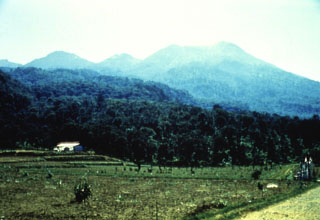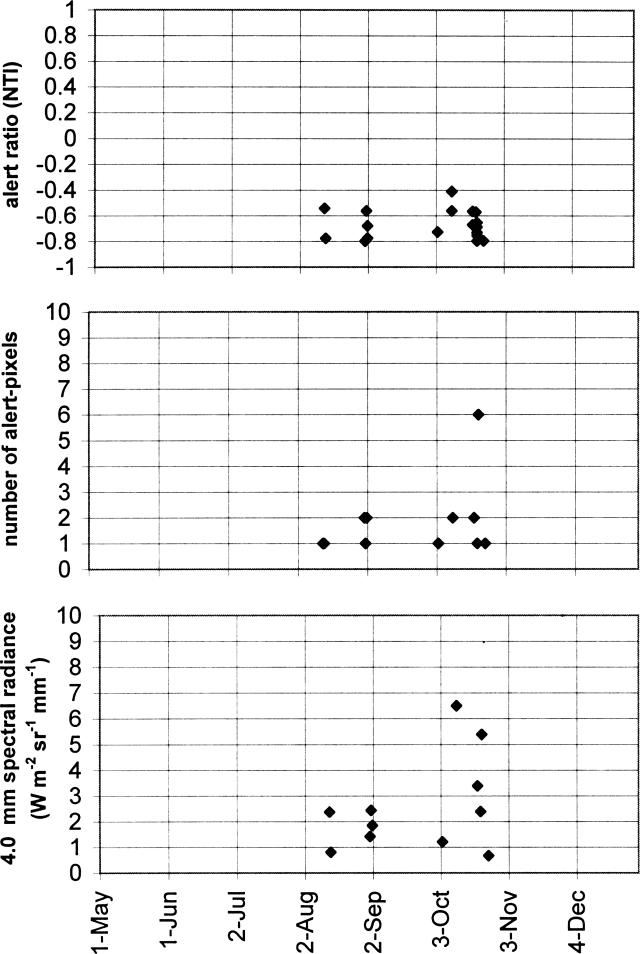Report on Arjuno-Welirang (Indonesia) — March 2003
Bulletin of the Global Volcanism Network, vol. 28, no. 3 (March 2003)
Managing Editor: Edward Venzke.
Arjuno-Welirang (Indonesia) Thermal alerts indicate possible activity during August-October 2002
Please cite this report as:
Global Volcanism Program, 2003. Report on Arjuno-Welirang (Indonesia) (Venzke, E., ed.). Bulletin of the Global Volcanism Network, 28:3. Smithsonian Institution. https://doi.org/10.5479/si.GVP.BGVN200303-263290
Arjuno-Welirang
Indonesia
7.733°S, 112.575°E; summit elev. 3343 m
All times are local (unless otherwise noted)
Thermal alerts detected by MODIS within the 2001-2002 period occurred only during August-October 2002 (figure 3) in the summit area. The first alert occurred on 13 August 2002 when a single alert-pixel had an alert ratio of -0.542. On 10 October the anomaly consisted of two alert-pixels with a maximum alert ratio of -0.409, and on 21 October the anomaly was characterized by six alert-pixels (clustered SW of the summit) with a maximum alert ratio of -0.571.
The Volcanological Survey of Indonesia reported that the volcano was at Status Level I (no activity) in October 2002. No observations were reported, but only distant tectonic earthquakes were detected at the seismograph station.
An explosive eruption took place in the NW part of Gunung Welirang in October 1950, and eruptive activity was reported on the NW flank (Kawah Plupuh) in August 1952. Steam plumes from the summit of Welirang were photographed from space on 13 September 1991 (BGVN 16:08) and in mid-November 1994.
Geological Summary. The Arjuno and Welirang volcanoes anchor the SE and NW ends, respectively, of a 6-km-long line of volcanic cones and craters. The complex overlies most of the Gunung Ringgit edifice, whose summit is about 3 km NE from the main ridge. Pyroclastic cones are located on the north flank of Gunung Welirang and along an E-W line cutting across the southern side of Gunung Arjuno that extends to the lower SE flank. Fumarolic areas with sulfur deposition occur at several locations on Welirang.
Information Contacts: Dali Ahmad, Volcanological Survey of Indonesia (VSI), Jalan Diponegoro No. 57, Bandung 40122, Indonesia (URL: http://www.vsi.esdm.go.id/); Diego Coppola and David A. Rothery, Department of Earth Sciences, The Open University, Milton Keynes, MK7 6AA, UK. Thermal alerts courtesy of the HIGP MODIS Thermal Alerts Team (URL: http://modis.higp.hawaii.edu/).


